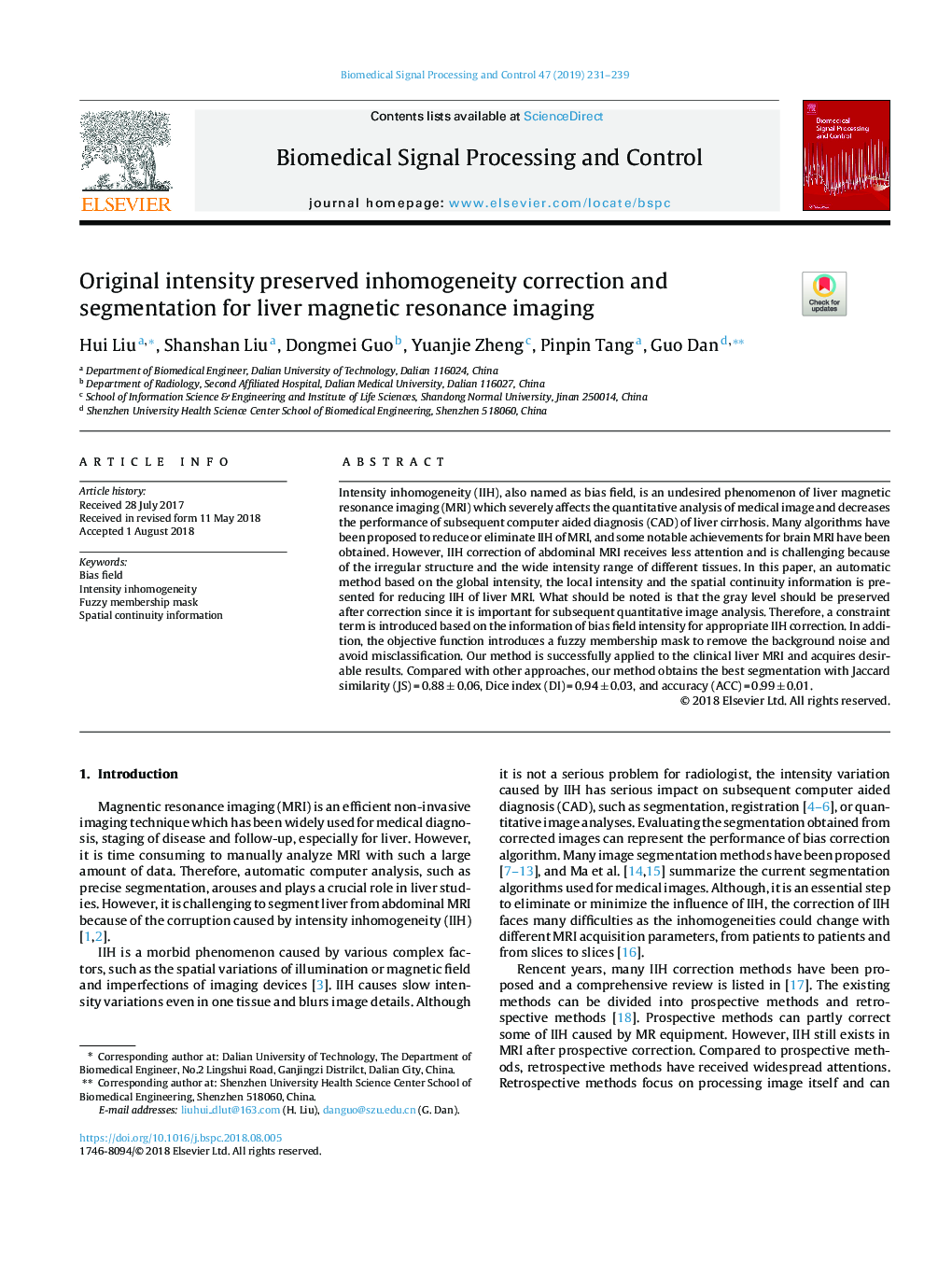| Article ID | Journal | Published Year | Pages | File Type |
|---|---|---|---|---|
| 10127192 | Biomedical Signal Processing and Control | 2019 | 9 Pages |
Abstract
Intensity inhomogeneity (IIH), also named as bias field, is an undesired phenomenon of liver magnetic resonance imaging (MRI) which severely affects the quantitative analysis of medical image and decreases the performance of subsequent computer aided diagnosis (CAD) of liver cirrhosis. Many algorithms have been proposed to reduce or eliminate IIH of MRI, and some notable achievements for brain MRI have been obtained. However, IIH correction of abdominal MRI receives less attention and is challenging because of the irregular structure and the wide intensity range of different tissues. In this paper, an automatic method based on the global intensity, the local intensity and the spatial continuity information is presented for reducing IIH of liver MRI. What should be noted is that the gray level should be preserved after correction since it is important for subsequent quantitative image analysis. Therefore, a constraint term is introduced based on the information of bias field intensity for appropriate IIH correction. In addition, the objective function introduces a fuzzy membership mask to remove the background noise and avoid misclassification. Our method is successfully applied to the clinical liver MRI and acquires desirable results. Compared with other approaches, our method obtains the best segmentation with Jaccard similarity (JS)â=â0.88â±â0.06, Dice index (DI)â=â0.94â±â0.03, and accuracy (ACC)â=â0.99â±â0.01.
Keywords
Related Topics
Physical Sciences and Engineering
Computer Science
Signal Processing
Authors
Hui Liu, Shanshan Liu, Dongmei Guo, Yuanjie Zheng, Pinpin Tang, Guo Dan,
